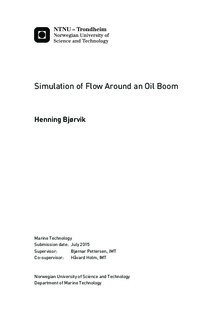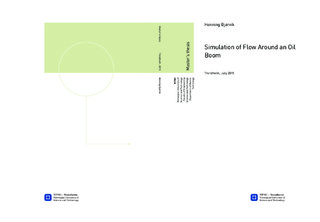| dc.description.abstract | The interFoam solver is used in this thesis. This solver applies the VOF method to trace the interface between two fluids. This method and the interFoam solver is thoroughly discussed in this thesis.
A convergence study is performed in order to find sufficient amount of cells in front of the object to preserve the circulation of fluid. This circulation is essential to keep the oil from draining under the object. This study is performed with only water, i.e. one-phase. Also a study of different Reynolds number and angling of object is performed.
To better understand how the interface between the fluids behave, a channel study is performed. This study takes into consideration grid structure, density difference, viscosity difference, CFL number and Froude number.
Applying an oil layer to the one-phase circulation problem is rather difficult. A study on how to improve the results of diffusing interface is done, with regard to solving algorithm, different schemes for different operators, and mesh structure. It is found that a structured grid is highly recommended.
Introducing higher viscosity oil seems to be more troublesome, and the interface diffuse much more easily. | |

